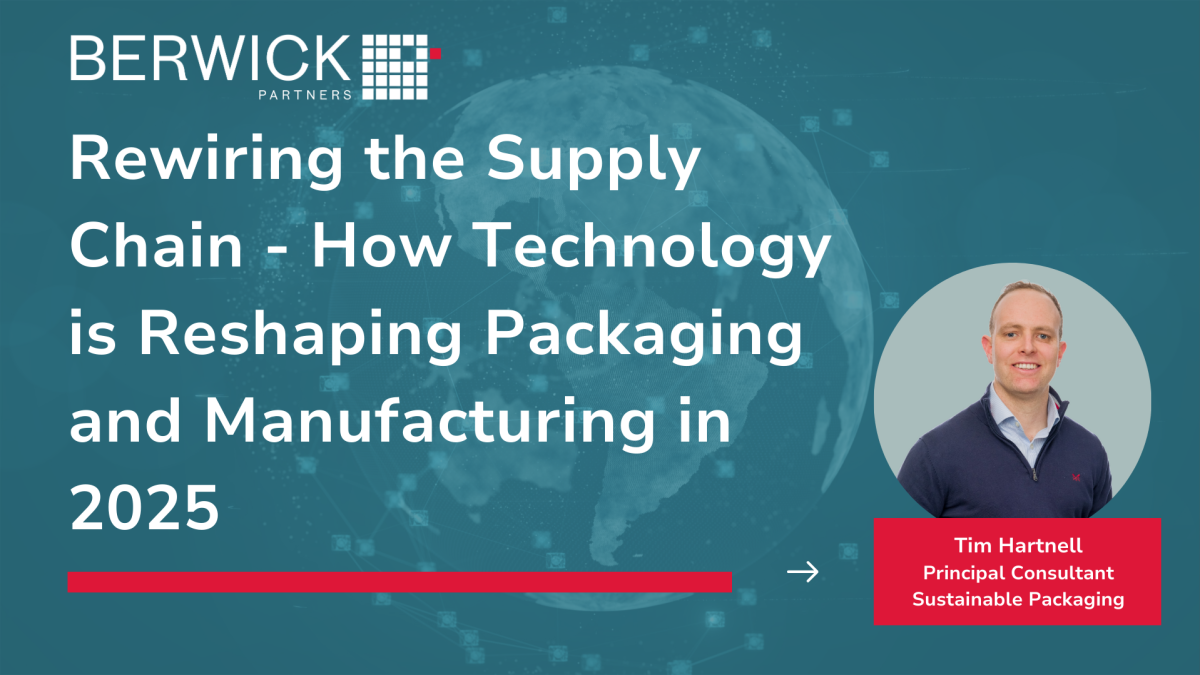Reflecting on 2024 and Looking Ahead to 2025: Sustainable Packaging

The packaging industry is currently navigating several significant challenges as businesses strive to stay competitive amidst ongoing market headwinds and a complex value chain. Key priorities for companies include balancing volumes, costs, and demand, especially as industry consolidation continues. According to BDO, 2023/24 marked a record year for packaging transactions, highlighting the dynamic nature of the sector.
Looking ahead to 2025, companies are expected to focus heavily on AI, digitalisation, and automation. These technologies will be crucial in driving innovation and integrating advanced processes into global operations. Additionally, circularity and sustainability, driven by regulatory changes, are anticipated to be major catalysts for transformation. Investment in research and development (R&D) is projected to grow as businesses adapt to these evolving demands.
In November, I attended the Sustainable Packaging Summit in Amsterdam. During the event, I had the opportunity to meet with numerous brand owners and packaging producers. A common theme that emerged from these discussions was the significant apprehension surrounding the level of collaboration required to achieve packaging goals and targets. A stand out-theme was that a team effort is essential, and currently, there is a considerable reliance on the consortium of NGOs and alliances such as the Ellen MacArthur Foundation, WWF, Alliance to End Plastic Waste, CEFLEX, and WRAP. These organisations play a crucial role in galvanising the value chain and driving the necessary changes within the industry. Their efforts are vital in fostering the collaboration needed to meet sustainability objectives.
In 2025 the competition for talent will be intense, particularly in supply chain, procurement, R&D, commercial, and strategic functions. This is especially true in Europe, where significant governance and regulatory changes are taking place. In December 2024, the EU Council approved new rules aimed at reducing waste and promoting reuse as part of the Packaging and Packaging Waste Regulation (PPWR). This regulation emphasises waste reduction and recyclability, compelling more companies to adopt End-of-Life solutions for their packaging formats. Consequently, businesses must align their operations with the evolving regulatory landscape, which will likely lead to changes in leadership.
In the US and emerging markets, similar shifts are expected as their regulatory frameworks begin to gain traction. Fibre-based packaging solutions continue to be highly sought after, provided they meet regulatory barrier properties. As a result, companies are likely to advance their efforts in developing paper-based solutions to meet these standards.
Overall, the packaging industry is poised for significant transformation in 2025, driven by technological advancements, regulatory pressures, and a competitive talent landscape.
For more information on the Sustainable Packaging industry, or to expand your leadership team, please contact Tim Hartnell.



